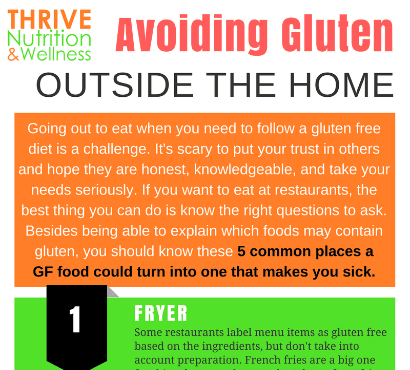Does Where You Live Impact Your Disease Risk?
- By Andrea Langston, MS, CNS, CDN
- •
- 10 May, 2018
- •

A study published in February found that people living north of certain latitudes in the US were more likely to have celiac disease.
· The study included over 22,000 people across the United States
· A total of 0.7 percent of those interviewed had been diagnosed with celiac disease
· In the lowest latitudes, (35 degrees latitude and below) only 0.2 percent of the participants had CD. (For reference, this is south of Memphis, Charlotte, and Santa Fe)
· The prevalence rose to 0.6 percent in those living at latitudes between 35 and 40.
· In latitudes 40 degrees and further north, 1.2 percent of people interviewed had CD. (40 degrees latitude includes cities such as New York City, Boulder, Colorado, and Pittsburgh, Pennsylvania)
Interestingly, another study published the same month estimated the rate of celiac disease to be 3.1 percent in adolescents in Denver, CO. Denver is located just above 39 degrees latitude.
Some other notes:
· The first study also found a higher prevalence of CD in those with more than twelve years of education. (My assumption would be that this link may correlate with an increased ability and likelihood to go to the doctor regularly and have the means to get tested for various conditions.)
· An increased prevalence of CD was also found in those who were overweight or obese. This is quite interesting considering that in the past, people with celiac disease were thought to be underweight and malnourished (although you can absolutely be overweight or obese and malnourished as well).
Although these are just two studies and we can’t really make sweeping conclusions based on them, it brings additional questions to mind, such as:
· Is an increased prevalence of CD in higher latitudes consistent around the world or only in the US?
· Could the risk of CD be related to vitamin D levels, as those north of 40 degrees are likely exposed to less natural sunlight throughout the year?
· Could the higher incidence be, at least in part, due to higher diagnosis, not necessarily higher susceptibility? (Maybe doctors in the northern latitudes are more likely to suspect and test for CD than those in the south for various reasons?)
· If 1.2 percent of people in northern latitudes had CD, what percentage of people are still undiagnosed?
· Does the study showing an increased prevalence of CD in adolescents in Denver indicate a link to higher risk of CD due to location, and/or age? Could the younger generations have a higher rate of diagnosis due to new risk factors?
Of course, these are all questions that require more research. Although we do not have the answers to many of the questions regarding celiac disease, research in this area continues to expand, and more and more clues are being uncovered that have the potential to help with understanding, diagnosis, treatment, and maybe even prevention of celiac disease down the road.
Here are links to the two articles referenced above:
https://www.ncbi.nlm.nih.gov/pubmed/28238771
https://celiac.org/wp/wp-content/uploads/2017/04/gastro-liu.pdf
Copyright © 2017 Thrive Nutrition & Wellness, LLC

















